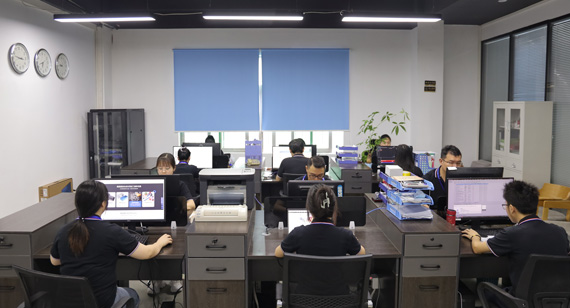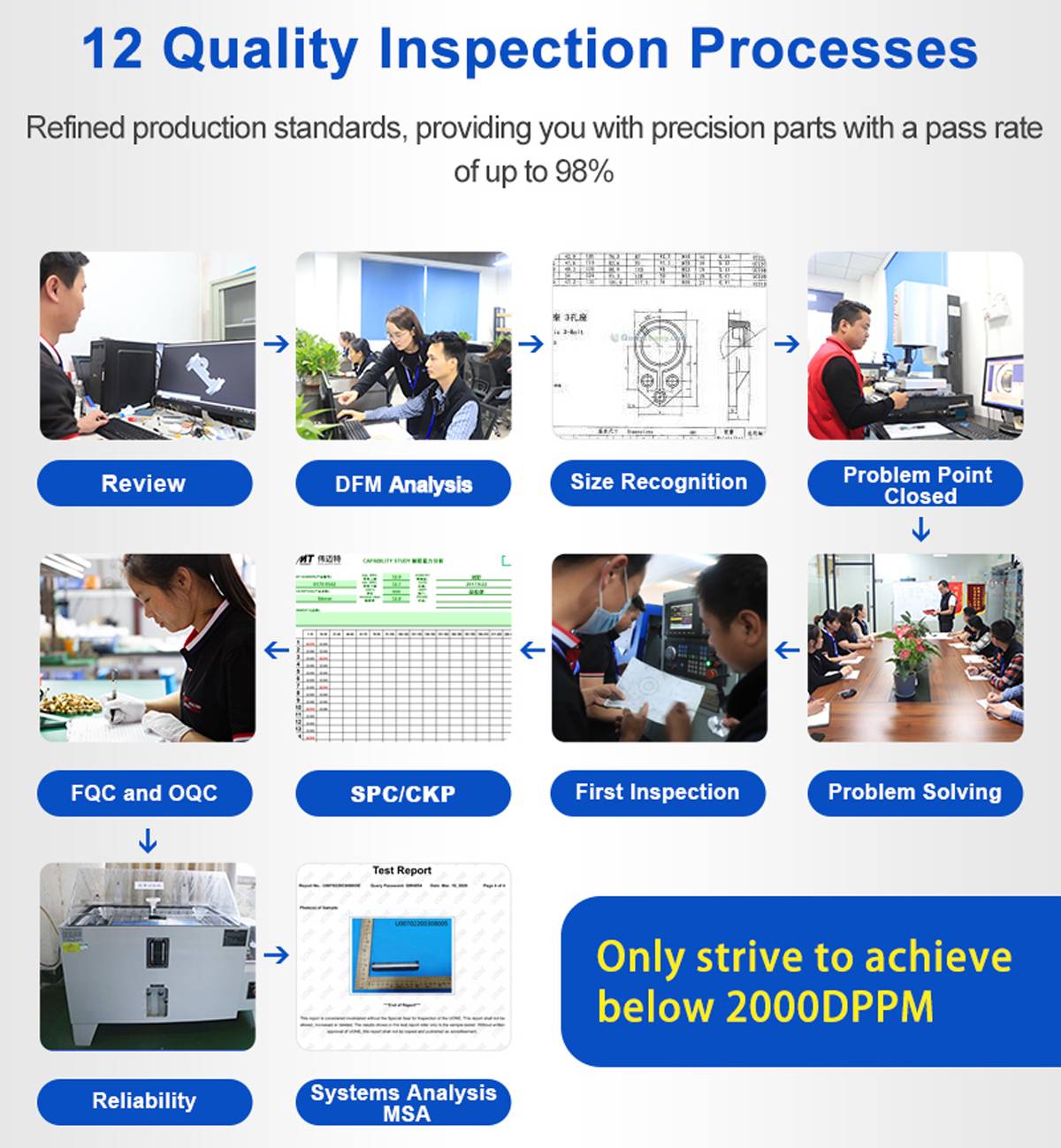15 years one-stop China custom CNC machining parts factory

Hey there I’m VMT Sam!
With 25 years of CNC machining experience we are committed to helping clients overcome 10000 complex part-processing challenges all to contribute to a better life through intelligent manufacturing. Contact us now
 113 |
Published by VMT at Mar 07 2024
113 |
Published by VMT at Mar 07 2024
The Relationship Between CNC Machined Parts Lead Time and Customer Demands
In the realm of CNC machined parts manufacturing, the relationship between lead time and customer demands is a nuanced and crucial dynamic. This connection not only influences the production planning and operational efficiency of CNC machining factories but also directly impacts customer satisfaction and the market competitiveness of enterprises. This article delves into the intricate relationship between the lead time of CNC machined parts and customer demands, analyzing how to balance and optimize this relationship to meet the needs and expectations of both parties.

I. Impact of Customer Demands on Lead Time
Customer demands serve as the central driving force behind the lead time of CNC machined parts. When customers seek customized CNC machined parts, they typically specify delivery time requirements influenced by factors such as project timelines, market demands, and product iterations. Consequently, changes in customer demands can directly affect lead times.
To meet customer delivery time requirements, CNC machining factories need to flexibly adjust their production plans. This may involve allocating resources across various aspects like equipment, personnel, and raw materials. If customer demands frequently change or lack clarity, it introduces significant uncertainty into the factory's production plans, increasing lead time volatility and risk.

II. Lead Time's Response to Customer Demands
Lead time serves as a direct response from CNC machining factories to customer demands. A well-defined lead time not only satisfies customer production schedule requirements but also reflects the factory's production capacity and efficiency. Hence, the accuracy and stability of lead times are crucial for maintaining customer satisfaction.
To enhance the responsiveness of lead times, CNC machining factories need to strengthen communication and collaboration with customers. In-depth understanding of customer project requirements and production schedules allows the factory to predict lead times more accurately and formulate corresponding production plans. Additionally, establishing efficient production management systems and quality control frameworks ensures the stability and controllability of the production process, guaranteeing the accuracy and reliability of lead times.
III. Balancing and Optimizing the Relationship between Lead Time and Customer Demands
Balancing and optimizing the relationship between lead time and customer demands pose significant challenges for CNC machining factories. To achieve this goal, factories need to take a series of measures:
Improve Production Efficiency and Equipment Utilization:
Introduce advanced CNC machining equipment and technological processes to boost production efficiency and equipment utilization, thus shortening production cycles to better meet customer delivery time requirements.
Optimize Production Planning and Scheduling:
Develop detailed production plans and schedules, strategically allocate production resources and process flows, ensure seamless coordination between various production stages, and reduce production waiting times and delays.
Strengthen Quality Control and Inspection:
Establish a comprehensive quality control system and detection mechanisms to ensure the stable and reliable quality of CNC machined parts. Strengthening quality control and inspection reduces production delays and lead time extensions due to quality issues.

Enhance Supply Chain Responsiveness:
Establish stable cooperative relationships with suppliers to ensure the stability and timeliness of raw material and component supplies. Strengthening supply chain management and information sharing enhances the responsiveness and flexibility of the supply chain.
Intensify Customer Communication and Collaboration:
Maintain close communication and collaboration with customers, promptly understand customer needs and feedback, and jointly formulate and adjust production plans. Strengthening customer communication and collaboration ensures better satisfaction of customer delivery time requirements and enhances customer satisfaction.
IV. Case Study and Practical Implementation
To illustrate the relationship between CNC machined parts lead time and customer demands, and how to optimize this relationship, let's analyze a real-world case. A CNC machining factory received an urgent order where the customer required a large quantity of high-precision parts to be machined within a short timeframe. The factory promptly assessed its production capacity and resource situation, adjusted production plans, and prioritized the production of the urgent order. Simultaneously, the factory maintained close communication with the customer, providing real-time updates on production progress and addressing potential issues, ensuring the customer was informed about the order status. In the end, the factory successfully completed the order within the agreed-upon timeframe, earning high praise from the customer.
This case demonstrates how a CNC machining factory can flexibly adjust production plans and resource allocations to meet urgent delivery time requirements. Through strengthened communication and collaboration with the customer, the factory not only ensures the accuracy and stability of lead times but also enhances customer satisfaction and market competitiveness.
V. Conclusion and Outlook
The relationship between CNC machined parts lead time and customer demands is intricate and delicate. To meet customer delivery time requirements and enhance customer satisfaction, CNC machining factories need to take a series of measures to optimize this relationship. Through methods such as improving production efficiency, optimizing production planning, strengthening quality control and inspection, enhancing supply chain responsiveness, and intensifying customer communication and collaboration, factories can better balance the relationship between lead time and customer demands, achieving a win-win situation for both parties.
Looking ahead, as CNC machining technology and smart manufacturing continue to advance, the relationship between lead time and customer demands for CNC machined parts will further be optimized. By introducing advanced production management systems and intelligent equipment, factories can achieve more efficient, flexible, and precise production planning, better meeting the personalized needs of customers. Simultaneously, as customer demands for product quality and delivery times continue to rise, CNC machining factories need to continuously enhance their production capabilities and service levels to adapt to market changes and evolving demands.
Ready To Start Your Next Project?
Get Instant Quote

Request a Free Quote
Send us a message if you have any questions or request a quote. We will get back to you ASAP!